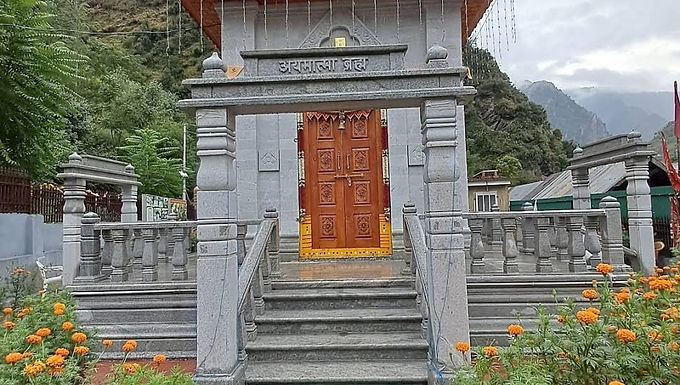Vijeshwara Temple Bijbehara

Vijeshwara, also known as Bijbehara, is a town of immense historical, cultural, and spiritual significance located in the Anantnag district of Jammu and Kashmir. Nestled along the banks of the river Jhelum, also known as Vitasta, Bijbehara has been a prominent center of learning, devotion, and heritage since ancient times.
The Significance of Vijeshwara Temple
The Vijeshwara Temple, believed to have been established during the reign of King Vijayanand in the 6th century CE, stands as a testament to Kashmir's rich historical and spiritual legacy. This site was once a revered center of learning, attracting scholars from across the world to study philosophy, medicine, literature, astronomy, astrology, sculpture, and music. Among its historical accomplishments, it is said that the famous Sanskrit scholar Pandit Kalhana composed parts of his monumental work, Rajatarangini, here.
The temple is also steeped in fascinating folklore, including tales of its architectural grandeur. Historical accounts suggest that the tower of the Vijeshwara Temple was so tall that its shadow reached the Vodis at Mattan during sunrise and the Martand Temple premises at sunset, a feat symbolizing the temple's architectural and spiritual prominence.
The Historical Destruction
The Vijeshwara Temple, like many ancient Hindu temples in Kashmir, faced significant destruction over the centuries.
Sikandar Butshikan’s Iconoclasm: In the 14th century, Sikandar Butshikan, notorious for his temple destructions, targeted Vijeshwara. Cryptic inscriptions on the temple’s stone slabs, believed to hold its secrets, were deciphered by a local, leading to its collapse. Many Shiva-lingas and idols were also destroyed.
Restoration Efforts During the Dogra Reign
Centuries after its destruction, the Dogra rulers, particularly Maharaja Gulab Singh, Maharaja Ranbir Singh, and Raja Pratap Singh, undertook efforts to restore the temple and its surrounding structures. They reconstructed the Harishchandra Ghat, a replica of Varanasi’s famous ghat, and attempted to preserve what remained of Vijeshwara's architectural legacy. Temples of Vishnu, Shiva, and other deities were rebuilt, showcasing the Dogra dynasty’s dedication to conserving Kashmir’s heritage.
Current State and Challenges :
Today, the original structure of the Vijeshwara Temple lies in ruins. Fragments of its glorious past can still be found scattered across Bijbehara. Some artifacts, including carved stone idols and tiles, have been relocated to the SPS Museum in Srinagar. Others lie embedded in the walls of pits near the site. Notable relics include:
Ganesh idols and Shiva riding Nandi.
Temples of Vishnu and small Shiva-lingas.
Stone receptacles for temple offerings, now repurposed in local mosques.
Despite its fragmented state, Vijeshwara continues to inspire awe and devotion, standing as a silent witness to Kashmir’s historical and spiritual journey.
The Way Forward
The Vijeshwara Devasthan Trust has urged local authorities to undertake the temple's reconstruction and conservation. Proposed measures include:
Scholarly Research: Allocating funds for intellectual studies to rediscover the site’s lost knowledge and history.
Heritage Promotion: Including Vijeshwara on India’s heritage map to generate awareness.
Tourism Development: Hosting cultural events, sound-and-light shows, and festivals to attract visitors and revive the temple’s legacy.
Conclusion
Vijeshwara Temple is more than just a historical site; it is a symbol of resilience and the rich cultural tapestry of Kashmir. Its story, one of grandeur, destruction, and enduring legacy, reflects the spirit of the land and its people. The restoration of Vijeshwara is not just about rebuilding a temple; it is about reviving an integral part of Kashmir’s identity and history.
